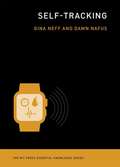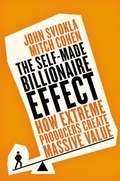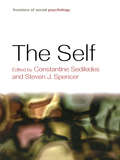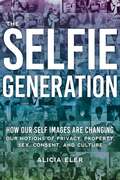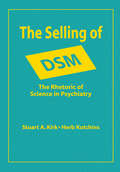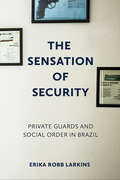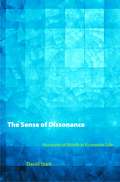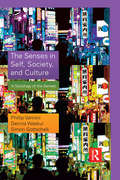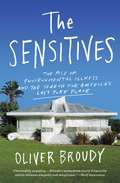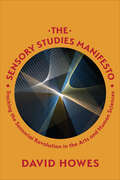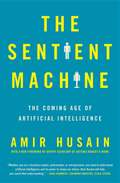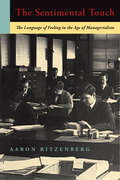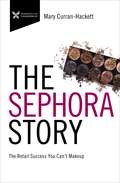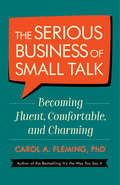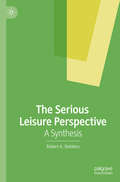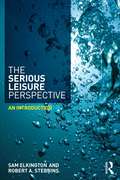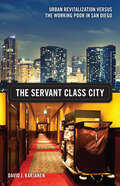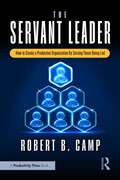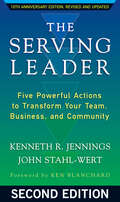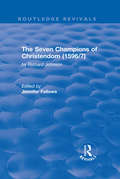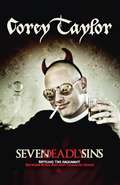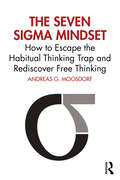- Table View
- List View
The Self-Tracking
by Gina Neff Dawn NafusPeople keep track. In the eighteenth century, Benjamin Franklin kept charts of time spent and virtues lived up to. Today, people use technology to self-track: hours slept, steps taken, calories consumed, medications administered. Ninety million wearable sensors were shipped in 2014 to help us gather data about our lives. This book examines how people record, analyze, and reflect on this data, looking at the tools they use and the communities they become part of. Gina Neff and Dawn Nafus describe what happens when people turn their everyday experience -- in particular, health and wellness-related experience -- into data, and offer an introduction to the essential ideas and key challenges of using these technologies. They consider self-tracking as a social and cultural phenomenon, describing not only the use of data as a kind of mirror of the self but also how this enables people to connect to, and learn from, others.Neff and Nafus consider what's at stake: who wants our data and why; the practices of serious self-tracking enthusiasts; the design of commercial self-tracking technology; and how self-tracking can fill gaps in the healthcare system. Today, no one can lead an entirely untracked life. Neff and Nafus show us how to use data in a way that empowers and educates.
The Self-made Billionaire Effect: How Extreme Producers Create Massive Value
by Mitch Cohen John SvioklaImagine what Atari might have achieved if Steve Jobs had stayed there to develop the first massmarket personal computer. Or what Steve Case might have done for PepsiCo if he hadn't left for a gaming start-up that eventually became AOL. <P><P>What if Salomon Brothers had kept Michael Bloomberg, or Bear Stearns had exploited the inventive ideas of Stephen Ross? Scores of top-tier entrepreneurs worked for established corporations before they struck out on their own and became self-made billionaires. People like Mark Cuban, John Paul DeJoria, Sara Blakely, and T. Boone Pickens all built businesses--in some cases, multiple businesses--that are among today's most iconic brands. This fact raises two profound questions: Why couldn't their former employers hang on to to these extraordinarily talented people? And why are most big companies unable to create as much new value as the world's roughly 800 self-made billionaires? John Sviokla and Mitch Cohen decided to look more closely at self-made billionaires because creating $1 billion or more in value is an incredible feat. Drawing on extensive research and interviews, the authors concluded that many of the myths perpetuated about billionaires are simply not true. These billionaires aren't necessarily smarter, harder working, or luckier than their peers. They aren't all prodigies, crossing the billionaire finish line in their twenties. Nor, most of the time, do they create something brand-new: More than 80 percent of the billionaires in the research sample earned their billions in highly competitive industries. The key difference is what the authors call the "Producer" mind-set, in contrast with the far more pervasive "Performer" mind-set. Performers strive to excel in well-defined areas, and are important. But Producers are critical to any company looking to create massive value because they redefine what's possible, rather than simply meeting preexisting goals and standards. Combining sound judgment with imaginative vision, Producers think up entirely new products, services, strategies, and business models. Big companies tend to reward Performers and discourage the unconventional ways of Producers. But it's the latter who integrate multiple ideas, perspectives, and actions, and who trust their insights enough to make game-changing bets. This book breaks down the five critical habits of mind of massive value-creators, so you can learn how to identify, encourage, and retain such individuals--and maybe even become one yourself. The Self-made Billionaire Effect will forever change the way you think about talent and business value.
The Self: Fundamental Theory And Research (Frontiers of Social Psychology)
by Constantine Sedikides Steven J. SpencerThis volume provides a cutting-edge exposition to research on the self. Sixteen authoritative overviews highlight the role of the self around four themes. The first theme is Brain and Cognition, which includes a social neuroscience perspective on the self, implicit self-cognition, the structure of the self and autobiographical memory. The next theme is Motivation, in which chapters include social comparison, self-regulation, narcissism, and modesty. The third theme is Self-esteem and Emotions, covered by chapters on the measurement of self-esteem, terror management theory, sociometer theory, and self-conscious emotions. The final theme concerns the Interpersonal, Intergroup and Cultural Context, containing chapters on intimate relationships, social exclusion, the collective self, and culture. Throughout the volume, the exposition is both scholarly and accessible. It also offers critical assessments along with thoughtful discussions of challenges and problems ahead, as well as the generation of novel hypotheses. As such, the book aspires to influence the research agenda for several years to come. The Self will serve as an essential reference volume for active researchers in the field, while also being appropriate for use as a textbook in advanced courses on the self.
The Selfie Generation: How Our Self-Images Are Changing Our Notions of Privacy, Sex, Consent, and Culture
by Alicia Eler<p>Whether it's Kim Kardashian uploading picture after picture to Instagram or your roommate posting a mid-vacation shot to Facebook, selfies receive mixed reactions. But are selfies more than, as many critics lament, a symptom of a self-absorbed generation? <p>Millennial Alicia Eler's The Selfie Generation is the first book to delve fully into this ubiquitous and much-maligned part of social media, including why people take them in the first place and the ways they can change how we see ourselves. Eler argues that selfies are just one facet of how we can use digital media to create a personal brand in the modern age. More than just a picture, they are an important part of how we live today. <p>Eler examines all aspects of selfies, online social networks, and the generation that has grown up with them. She looks at how the boundaries between people’s physical and digital lives have blurred with social media; she explores questions of privacy, consent, ownership, and authenticity; and she points out important issues of sexism and double standards wherein women are encouraged to take them but then become subject to criticism and judgment. Alicia discusses the selfie as a paradox—both an image with potential for self-empowerment, yet also a symbol of complacency within surveillance culture The Selfie Generation explores just how much social media has changed the ways that people connect, communicate, and present themselves to the world.</p>
The Selling of DSM: The Rhetoric of Science in Psychiatry (Social Problems And Social Issues Ser.)
by Stuart A. KirkWhen it was first published in 1980, the Diagnostic and Statistical Manual of Mental Disorders, Third Edition—univer-sally known as DSM-III—embodied a radical new method for identifying psychiatric illness. Kirk and Kutchins challenge the general understanding about the research data and the pro-cess that led to the peer acceptance of DSM-III. Their original and controversial reconstruction of that moment concen-trates on how a small group of researchers interpreted their findings about a specific problem—psychiatric reliability—to promote their beliefs about mental illness and to challenge the then-dominant Freudian paradigm.
The Semantic Web: Virtual Event, June 6–10, 2021, Revised Selected Papers (Lecture Notes in Computer Science #12739)
by Ruben Verborgh Mehwish Alam Simon Maier Claudia D’Amato Aidan Hogan Anastasia Dimou Ilaria Tiddi Arne Bröring Femke Ongenae Riccardo TommasiniThis book constitutes the proceedings of the satellite events held at the 18th Extended Semantic Web Conference, ESWC 2021, in June 2021. The conference was held online, due to the COVID-19 pandemic.During ESWC 2021, the following six workshops took place: 1) the Second International Workshop on Deep Learning meets Ontologies and Natural Language Processing (DeepOntoNLP 2021) 2) the Second International Workshop on Semantic Digital Twins (SeDiT 2021) 3) the Second International Workshop on Knowledge Graph Construction (KGC 2021) 5) the 6th International Workshop on eXplainable SENTIment Mining and EmotioN deTection (X-SENTIMENT 2021) 6) the 4th International Workshop on Geospatial Linked Data (GeoLD 2021).
The Sensation of Security: Private Guards and Social Order in Brazil (Police/Worlds: Studies in Security, Crime, and Governance)
by Erika Robb LarkinsThe Sensation of Security explores how private security guards are a permanent, conspicuous fixture of everyday life in the Brazilian city of Rio de Janeiro. Drawing on long-term ethnographic research with security laborers, managers, company owners, and elite global consultants, Erika Robb Larkins examines the provision of security in Rio from the perspective of security personnel, providing an analysis of the racialized logics that underpin the ongoing work of securing the city. Larkins shows how guards communicate a sensação de segurança (a sensation of security) to clients and customers who have the capital to pay for it. Cultivated through performances by security laborers, the sensation of security is a set of culturally shaped racialized and gendered impressions related to safety, order, well-being, and cleanliness. While the sensação de segurança indexes an outward-facing task of allaying fears of crime and maintaining order in elite spaces, it also refers to the emotional labor and embodied worlds that security workers navigate.
The Sense of Dissonance: Accounts of Worth in Economic Life
by David StarkWhat counts? In work, as in other areas of life, it is not always clear what standards we are being judged by or how our worth is being determined. This can be disorienting and disconcerting. Because of this, many organizations devote considerable resources to limiting and clarifying the logics used for evaluating worth. But as David Stark argues, firms would often be better off, especially in managing change, if they allowed multiple logics of worth and did not necessarily discourage uncertainty. In fact, in many cases multiple orders of worth are unavoidable, so organizations and firms should learn to harness the benefits of such "heterarchy" rather than seeking to purge it. Stark makes this argument with ethnographic case studies of three companies attempting to cope with rapid change: a machine-tool company in late and postcommunist Hungary, a new-media startup in New York during and after the collapse of the Internet bubble, and a Wall Street investment bank whose trading room was destroyed on 9/11. In each case, the friction of competing criteria of worth promoted an organizational reflexivity that made it easier for the company to change and deal with market uncertainty. Drawing on John Dewey's notion that "perplexing situations" provide opportunities for innovative inquiry, Stark argues that the dissonance of diverse principles can lead to discovery.
The Senses in Self, Society, and Culture: A Sociology of the Senses (Sociology Re-Wired)
by Phillip Vannini Simon Gottschalk Dennis WaskulThe Senses in Self, Society, and Culture is the definitive guide to the sociological and anthropological study of the senses. Vannini, Waskul, and Gottschalk provide a comprehensive map of the social and cultural significance of the senses that is woven in a thorough analytical review of classical, recent, and emerging scholarship and grounded in original empirical data that deepens the review and analysis. By bridging cultural/qualitative sociology and cultural/humanistic anthropology, The Senses in Self, Society, and Culture explicitly blurs boundaries that are particularly weak in this field due to the ethnographic scope of much research. Serving both the sociological and anthropological constituencies at once means bridging ethnographic traditions, cultural foci, and socioecological approaches to embodiment and sensuousness. The Senses in Self,Society, and Culture is intended to be a milestone in the social sciences’ somatic turn.
The Sensitives: The Rise of Environmental Illness and the Search for America's Last Pure Place
by Oliver BroudyA compelling exploration of the mysteries of environmental toxicity and the community of &“sensitives&”—people with powerful, puzzling symptoms resulting from exposure to chemicals, fragrances, and cell phone signals, that have no effect on &“normals.&”They call themselves &“sensitives.&” Over fifty million Americans endure a mysterious environmental illness that renders them allergic to chemicals. Innocuous staples from deodorant to garbage bags wreak havoc on sensitives. For them, the enemy is modernity itself. No one is born with EI. It often starts with a single toxic exposure. Then the symptoms hit: extreme fatigue, brain fog, muscle aches, inability to tolerate certain foods. With over 85,000 chemicals in the environment, danger lurks around every corner. Largely ignored by the medical establishment and dismissed by family and friends, sensitives often resort to odd ersatz remedies, like lining their walls with aluminum foil or hanging mail on a clothesline for days so it can &“off-gas&” before they open it. Broudy encounters Brian Welsh, a prominent figure in the EI community, and quickly becomes fascinated by his plight. When Brian goes missing, Broudy travels with James, an eager, trusting sensitive to find Brian, investigate this disease, and delve into the intricate, ardent subculture that surrounds it. Their destination: Snowflake, the capital of the EI world. Located in eastern Arizona, it is a haven where sensitives can live openly without fear of toxins or the judgment of insensitive &“normals.&” While Broudy&’s book is wry, pacey, and down-to-earth, it also dives deeply into compelling corners of medical and American history. He finds telling parallels between sensitives and their cultural forebears, from the Puritans to those refugees and dreamers who settled the West. Ousted from mainstream society, these latter-day exiles nonetheless shed bright light on the anxious, noxious world we all inhabit now.
The Sensory Studies Manifesto: Tracking the Sensorial Revolution in the Arts and Human Sciences
by David HowesThe senses are made, not given. This revolutionary realization has come as of late to inform research across the social sciences and humanities, and is currently inspiring groundbreaking experimentation in the world of art and design, where the focus is now on mixing and manipulating the senses. The Sensory Studies Manifesto tracks these transformations and opens multiple lines of investigation into the diverse ways in which human beings sense and make sense of the world. This unique volume treats the human sensorium as a dynamic whole that is best approached from historical, anthropological, geographic, and sociological perspectives. In doing so, it has altered our understanding of sense perception by directing attention to the sociality of sensation and the cultural mediation of sense experience and expression. David Howes challenges the assumptions of mainstream Western psychology by foregrounding the agency, interactivity, creativity, and wisdom of the senses as shaped by culture. The Sensory Studies Manifesto sets the stage for a radical reorientation of research in the human sciences and artistic practice.
The Sentient Machine: The Coming Age of Artificial Intelligence
by Amir Husain&“A must-read for anyone looking to understand how artificial intelligence is poised to transform human society and life.&” —Paul Scharre, Author of Four Battlegrounds: Power in the Age of Artificial Intelligence The future is now. Acclaimed technologist and inventor Amir Husain explains how we can live amidst the coming age of sentient machines and artificial intelligence—and not only survive, but thrive.Artificial &“machine&” intelligence is playing an ever-greater role in our society. We are already using cruise control in our cars, automatic checkout at the drugstore, and are unable to live without our smartphones. The discussion around AI is polarized; people think either machines will solve all problems for everyone, or they will lead us down a dark, dystopian path into total human irrelevance. Regardless of what you believe, the idea that we might bring forth intelligent creation can be intrinsically frightening. But what if our greatest role as humans so far is that of creators? Amir Husain, a brilliant inventor and computer scientist, argues that we are on the cusp of writing our next, and greatest, creation myth. It is the dawn of a new form of intellectual diversity, one that we need to embrace in order to advance the state of the art in many critical fields, including security, resource management, finance, and energy. &“In The Sentient Machine, Husain prepares us for a brighter future; not with hyperbole about right and wrong, but with serious arguments about risk and potential&” (Dr. Greg Hyslop, Chief Technology Officer, The Boeing Company). He addresses broad existential questions surrounding the coming of AI: Why are we valuable? What can we create in this world? How are we intelligent? What constitutes progress for us? And how might we fail to progress? Husain boils down complex computer science and AI concepts into clear, plainspoken language and draws from a wide variety of cultural and historical references to illustrate his points. Ultimately, Husain challenges many of our societal norms and upends assumptions we hold about &“the good life.&”
The Sentimental Touch: The Language of Feeling in the Age of Managerialism
by Aaron RitzenbergBetween 1850 and 1940, with the rise of managerial capitalism in the United States, the most powerful businesses ceased to be family owned, instead becoming sprawling organizations controlled by complex bureaucracies. Sentimental literature—work written specifically to convey and inspire deep feeling—does not seem to fit with a swiftly bureaucratizing society. Surprisingly, though, sentimental language persisted in American literature, even as a culture of managed systems threatened to obscure the power of individual affect.The Sentimental Touch explores the strange, enduring power of sentimental language in the face of a rapidly changing culture. Analyzing novels by Harriet Beecher Stowe, Mark Twain, Sherwood Anderson, and Nathanael West, the book demonstrates that sentimental language changes but remains powerful, even in works by authors who self-consciously write against the sentimental tradition. Sentimental language has an afterlife, enduring in American literature long after authors and critics declared it dead, insisting that human feeling can resist a mechanizing culture and embodying, paradoxically, the way that literary conventions themselves become mechanical and systematic.
The Sephora Story: The Retail Success You Can't Makeup (The Business Storybook Series)
by Mary Curran HackettWhat can you learn from the most successful companies in the world? The Sephora Story will help you understand and adopt the competitive strategies, workplace culture, and daily business practices that turned the makeup retailer into a paradise for makeup enthusiasts everywhere.Sephora is a playground for women, chock full of lipstick, eyeshadows, foundations, blushes, and so much more, just waiting to be experienced. It&’s where teens learn to apply foundation and adults learn how to create the perfect smoky eye. It&’s the cosmetic birthplace for the iconic Kardashian contour. And it&’s a dominant brand, taking home a large portion of the $48.3 billion-dollar makeup industry.The Sephora Story teaches you how Sephora was born in Paris in 1970 and has exploded since it opened its first North American store in 1997. Now, with at least one store in almost every mall, you may find yourself fighting to navigate the store. Through Sephora&’s story, you will learn:How to lead the evolution of a decades old brand and how to relaunch it in a new market.How to create a customer experience that revolutionizes an industry.How to bring together multiple brands under one roof without compromising their identities.And how to reach a younger audience and ignite a passion for your product.It&’s more than just makeup, it&’s an experience and this book will teach entrepreneurs, innovators, marketers, and executives everything they need to know about creating an iconic experience for their customers.
The Serious Business of Small Talk: Becoming Fluent, Comfortable, and Charming
by Carol FlemingSmall Talk Is the Single Most Important Communication Skill You Can Develop Carol Fleming wants to show you that small talk is not as "small" as you might think. It's the foundation of every relationship, professional and personal. It is the sound of people reaching out to each other, searching for similarities, shared interests, goodwill, connections, and friendship. And it's something we all do every day with people we know. It's just the one little bit about strangers that throws some people off. Graceful social conversation can be learned, even by those requiring the smallest of baby steps.Fleming covers the inner and outer aspects—from the right attitude to how to dress, move around, and introduce yourself. Most importantly, she lays out a series of simple, memorable conversational strategies that make it easy to go from "Nice weather we're having" to a genuine, rewarding give-and-take. But she won't tell you what to say. Believe it or not, you already have what you need inside you. She merely provides the keys to unlock it. Small talk is the language of welcome, the extension of friendliness, the gracious acknowledgment of others, the kindly exchange of introductions and smiles, and the creation of a safe, courteous social space—and this is what has you terrified? After you read this book, you'll wonder what all the fuss was about.
The Serious Leisure Perspective: A Synthesis
by Robert A. StebbinsThe Serious Leisure Perspective (SLP) is a theoretic framework developed by Robert A. Stebbins in 1973, that brings together three main forms of leisure known as serious leisure, casual leisure, and project-based leisure. The SLP has evolved considerably since 1973, and this textbook provides a synthesis of the many concepts and propositions, as well as the data supporting them. In this overview, Stebbins organizes the entire framework along conceptual lines, with careful attention to level of empirical support and validation of each concept, presenting an up-to-date version of the SLP that allows interested students and researchers of social psychology, sociology, and leisure studies, to pinpoint exact elements of the theory, the empirical base and its application.
The Serious Leisure Perspective: An Introduction
by Robert A. Stebbins Sam ElkingtonThe "Serious Leisure Perspective" (SLP) is a theoretical framework that can help us understand the complexities of modern leisure as both an activity and an experience. Bringing together the study of serious leisure, casual leisure and project-based leisure, it is an essential component of the Leisure Studies curriculum and an invaluable tool for exploring the significance of leisure in contemporary society. This book is the first of offer a comprehensive introduction to the Serious Leisure Perspective, from fundamental principles and key concepts to in-depth and wide-ranging case studies of serious leisure pursuits. The book introduces the history of the SLP and its position alongside other social theories that attempt to explain the nature and function of leisure. It explores important themes such as consumption, gender relations, social capital and quality of life, and delves deeply into the leisure of amateurs, hobbyists, career volunteers and occupational devotees. Every chapter includes a range of useful pedagogical features, such as review questions and group exercises, to help the student to grasp the importance of understanding leisure as a way of understanding contemporary social life and society. Combining cutting-edge theory and method with an engaging and practical interface, this is an essential text for all Leisure Studies courses and illuminating reading for any student working in Tourism, Events, Sport, Recreation, Sociology or Cultural Studies.
The Servant Class City: Urban Revitalization versus the Working Poor in San Diego (Globalization and Community #25)
by David J. KarjanenSan Diego, California, is frequently viewed as a model for American urban revitalization. It looks like a success story, with blight and poverty replaced by high-rises and jobs. But David J. Karjanen shows that the much-touted job opportunities for poor people have been concentrated in low-paying service work as the cost of living in San Diego has soared. The Servant Class City documents how, over a period of three decades, San Diego&’s urban transformation actually eroded the economic standing of the city&’s working poor.Karjanen demonstrates that urban policy in San Diego, which has been devoted to increasing tourism, has fostered the creation of jobs that do not actually provide either livable wages or paths to upward mobility. Marshaling a wealth of heretofore uncollected data, he challenges the presumption that decades-long stagnation of job mobility in the united states is a result of insufficient worker training or a &“skills mismatch,&” or is attributable to various personal qualities of the urban poor.Karjanen interweaves profiles of people with a compelling presentation of data. Each chapter addresses a significant topic: hospitality industry jobs, retail work, informal employment, &“fringe banking,&” and economic barriers to mobility. In revealing the true story of the &“poverty traps&” that are associated with low-wage jobs in the service economy, The Servant Class City complicates the rosy picture of life in an American tourist boomtown.
The Servant Leader: How to Create a Productive Organization By Serving Those Being Led
by Robert B. CampThis book details the way servant leaders think and act. It emphasizes the role of humility in the work of great leaders. Servant leaders see it as their job to grow their people and to remove obstacles from their paths. The servant leader looks ahead and sets out a path for the rest of the organization to follow. We see that dynamic occur as Thomas (the book’s central character) embraces Total Productive Maintenance, 5S, and later moonshining. A great leader, Thomas doesn’t stand in the limelight himself but pushes his people into it.This novel is about the transformation of an organization through the leadership style of a new leader – By introducing the reader to Thomas Harding, the author illustrates the crucial qualities of servant leaders.
The Serving Leader: Five Powerful Actions to Transform Your Team, Business, and Community
by Ken Jennings John Stahl-WertThe Serving LeaderFive Powerful Actions to Transform Your Team, Business, and Community, 10th Anniversary Edition, Revised and ExpandedIt's people who make organizations great, so how can leaders best help their people achieve that greatness? As Ken Jennings and John Stahl-Wert show in this new edition of their bestseller, you can't just demand greatness—you have to inspire it. The most effective leaders don't just stand in front of their people, they stand behind them too. As one of the characters in the book notes, "You qualify to be first by putting other people first." This concept sounds paradoxical, but it leads to extraordinary outcomes—and The Serving Leader shows precisely how and why.While Jennings and Stahl-Wert use a compelling fictional story to outline the basics of Serving Leadership, all the characters in it are based on real people, the organizations depicted are based on real organizations—and the results they achieved are what really happened. This edition features a new foreword by Ken Blanchard, a new introduction, and a new chapter checking back in with Mike, the main character, to see what he has learned in the twelve years since he embraced Serving LeadershipOn one level this is the most practical guide available to implementing Serving Leadership; on a deeper level, it is a book about the personal journey of growth that real leadership requires. Great organizations are great because they're filled with people who freely choose to do their very best. It's a maddeningly simple concept yet stunningly hard to execute. Jennings and Stahl-Wert show leaders how to earn that kind of commitment.
The Seven Champions of Christendom: The Seven Champions Of Christendom (Routledge Revivals Ser.)
by Richard JohnsonThis book wasa published in 2003. Although Richard Johnson's chivalric romance "The Seven Champions of Christendom" is little known today, it was widely read for over three centuries after its first appearance in print in the 1590s, influencing the work of English writers from John Bunyan to G.K. Chesterton and profoundly affecting the representation of St George, England's patron saint, in folklore and popular culture. In this volume, Jennifer Fellows offers a scholarly edition of the work.
The Seven Deadly Sins
by Corey TaylorFor the first time, Slipknot and Stone Sour frontman Corey Taylor speaks directly to his fans and shares his worldview about life as a sinner. And Taylor knows how to sin. As a small-town hero in the early '90s, he threw himself into a fierce-drinking, drug-abusing, hard-loving, live-for-the moment life. Soon Taylor's music exploded, and he found himself rich, wanted, and on the road. His new and ever-more extreme lifestyle had an unexpected effect, however; for the first time, he began to actively think about what it meant to sin and whether sinning could--or should--be recast in a different light. Seven Deadly Sins is Taylor's personal story, but it's also a larger discussion of what it means to be seen as either a "good" person or a "bad" one. Yes, Corey Taylor has broken the law and hurt people, but, if sin is what makes us human, how wrong can it be?
The Seven Pillars of Statistical Wisdom
by Stephen M. StiglerWhat gives statistics its unity as a science? Stephen Stigler sets forth the seven foundational ideas of statistics--a scientific discipline related to but distinct from mathematics and computer science and one which often seems counterintuitive. His original account will fascinate the interested layperson and engage the professional statistician.
The Seven Sigma Mindset: How to Escape the Habitual Thinking Trap and Rediscover Free Thinking
by Andreas G. MoosdorfLearn to retrain your mind and become more creative and productive with this step-by-step guide to replacing habitual thinking with free thinking.Unless you can name six thoughts you had today that you haven’t had before, you are a habitual thinker 99.9% of the time, just like everyone else. This is because our hard-wired survivor bias drives us to repeat mental patterns and solutions that seemed sensible in the past, and that provide comfort, social rewards and a stable identity. This means that our thinking follows a Six Sigma distribution and that only a tiny fraction of our daily thoughts are truly novel and free, which prevents us from reaching the groundbreaking solutions we need to adapt to a fast-changing world. But in this book, Andreas G. Moosdorf guides you to perceive your own habitual thinking more clearly and explore the vast, untapped potential of your own mind. Through a wealth of exercises, readers will rediscover forgotten resources, perspectives, and choices, and be empowered to take back the wheel in their own work and lives.Ditch your mental maps, rediscover the seven sigma of your thinking, and dive into a forgotten world of variability, productivity and deeper satisfaction with the Seven Sigma Mindset.
The Seventh Crusade, 1244–1254: Sources and Documents (Crusade Texts in Translation #16)
by Peter JacksonThe Seventh Crusade, led by King Louis IX of France, was the last major expedition for the recovery of the Holy Land actually to reach the Near East. The failure of his invasion of Egypt (1249-50), followed by his four-year stay in Palestine in order to retrieve the disaster, had a profound impact on the Latin West. In addition, Louis's operations in the Nile delta indirectly precipitated the Mamluk coup d'état, which ended the rule of the Ayyubids, Saladin's dynasty, in Egypt and began the transfer of power there to a military elite that would prove to be a far more formidable enemy to the Franks of Syria and Palestine. This volume comprises translations of the principal documents and of extracts from narrative sources - both Muslim and Christian - relating to the crusade, and includes many texts, notably the account of Ibn Wasil, not previously available in English. The themes covered include: the preparations and search for allies; the campaign in the Nile delta; the impact on recruitment of the simultaneous crusade against the emperor Frederick II; the Mamluk coup and its immediate consequences in the Near East; Western reactions to the failure in Egypt; and the popular 'crusade' of the Pastoureaux in France (1251), which aimed originally to help the absent king, but which degenerated into violence against the clergy and the Jews and had to be suppressed by force.
